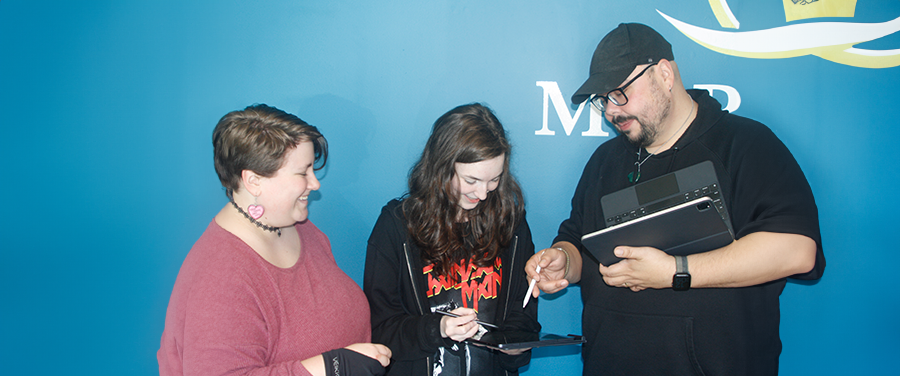Emma Walker Has Always Wanted to Help Others
The wins and watching people succeed are Counselling Skills/Social Human Services instructor Emma Walker’s favourite part of teaching.
Walker, a 2013 graduate of the program she currently instructs, was previously an instructor in 2021-22. Before enrolling in the Counselling Skills program in 2012, she was a successful hair stylist, but changed careers due to chronic pain from a car accident. As a hair stylist, she saw herself making people feel better about their aesthetic and helping them feel more confident. At the same time, her clients were confiding in her things people often wouldn’t tell others. “I was kind of like their counsellor and hair stylist at the same time,” says Walker. When it was time came to decide on a new career she thought about what else she could do to help people. She found the Counselling Skills/Social Human Services program while living in Antigonish. She had meetings with the local Employment Nova Scotia office and applied for funding to enroll in the program. Since her graduation, at a time in industry when a diploma still wasn’t considered as valuable as a degree, she gained a vast amount of experience working in ground-level roles and moving up in the field. “We’ve definitely seen trends change in terms of what qualifications and education is required for certain jobs,” says Walker.
When she reached the eight-year mark of her career, doors started opening for her in terms of equivalency and eligibility for government and Executive Director level opportunities. Her passion and desires ultimately led her on to working in homelessness and housing. She has held positions working in group homes, small options homes, dealing with psychiatric disorders and intellectual challenges, addictions and more. One position she takes pride in is being an original staff member of facility (unable to be identified due to confidentiality reasons) that was the first of its kind in Atlantic Canada dealing with late-stage alcoholism.
Walker has also worked with the Indigenous community, women and children fleeing intimate partner violence, educational and facilitation roles for adults with barriers to employment and positions of high levels of crisis where addictions, mental illness and trauma prevented them from accessing services. “I can’t see myself doing anything else,” adds Walker. “It has been a very rewarding career.” She started on the path to teaching after facilitating workshops and giving instruction on techniques both as a hairstylist and in counselling. The feedback she received was people were able to learn from her, she was approachable and she taught things in a way that made sense to people. As an instructor she found watching people grow has been another of the rewards she receives from her work. “No matter what the program, the workshop or whatever it is I am teaching, watching people walk in at one stage of their journey and seeing the small changes, the small growths and watching people achieve their goals ultimately is what makes it worth it,” says Walker. “I’ve also worked alongside people who have been in the industry for varying levels of time and to be able to be in a position to train folks for industry I find that to be one of the driving forces for enjoying what I do.” She also enjoys watching the personal growth each student experiences. That can be something small they struggle with interpersonally, the student who make changes in strides or graduates who become trailblazers in the field enacting changes to policies and procedures. “Whatever the case there are numerous different ways to market the success of students who are coming out of the program,” she adds.
Throughout her career, she has upgraded her own skillset by completing different trainings and certifications working on her Adult Education Certificate, becoming an accredited instructor through the Indigenous Certification Board of Canada and more. “I think for your career and in general you’re never finished learning,” adds Walker. “There’s always new up and coming research, new techniques and new trainings that we can ultimately always add more tools to our tool belt.”


